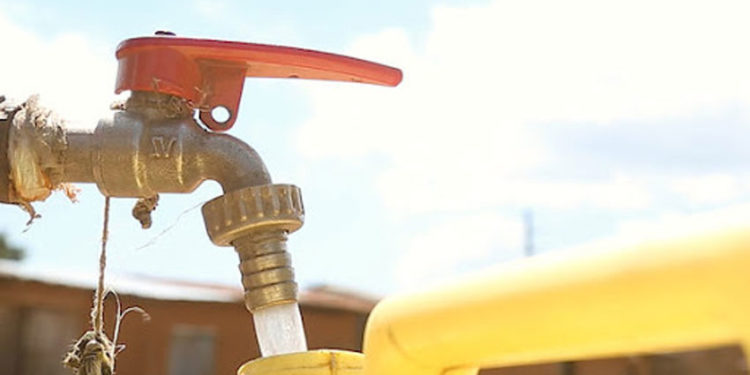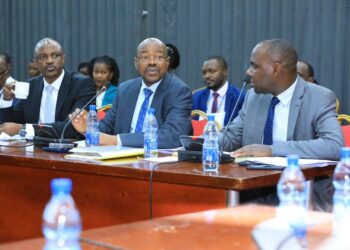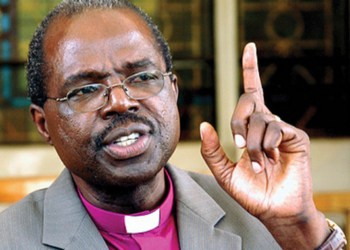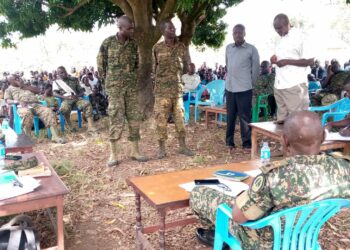Housing living conditions in every country are a key indicator of how well citizens, children inclusive, are living. In the case of Uganda, this is a mandatory requirement imposed on the government especially under the Children’s Act, the Constitution and also the Sustainable Development Goals no. 6 and 7.
Goal 6 is directly related to the ease with which access to water, sanitation and hygiene facilities for all citizens is guaranteed. Goal 7 requires that governments ensure that the same is affordably, reliably and sustainably accessible for especially the children.
The 2024 census report shows that Teso sub region has the highest number of children whose access to safe and affordable water services has greatly improved. The report puts Teso sub region at 97% of children having access to vastly improved water sources followed by Ankole at 59%. This improvement depicts easy access to tap water, boreholes, springs and protected wells among other sources.
The same report shows the percentage of children living in homes or households whose members or inhabitants can access clean and safe water sources within less than 1km radius from their place of abode. At the national level, 48% of Uganda’s children live in homes which can access their water source within 1km radius. When it comes sub regions, Buganda leads with 54% of its children able to access safe and clean water within less than 1km from their homes.
Other sub regions rank as follows: Busoga 52%, Acholi 51%, Elgon 50%, West Nile 48%, Bukedi 48%, Ankole 46%, Bunyoro 46%, Tooro 45%, Kigezi 45%, Lango 42%, Teso 40% and Karamoja 31%.
The census report also makes reference to the proportion of Uganda’s children living in homes or households with limited or constrained capacity to afford safe, clean and decent energy sources. That in Karamoja, 59% of the children live in homes which can’t afford better than gasoline, paraffin or even candles as sources of energy for lighting their surroundings at night. Other statistical sub regions rank as follows: West Nile 26%, Acholi 26%, Bunyoro 17%, Buganda 13%, Tooro 23%, Ankole 19%, Kigezi 25%, Lango 15%, Teso 13%, Busoga 33%, Bukedi 42% and Elgon 44%.
In the same 2024 census report by UBOS is 380 pages and covers many things including the availability of toilet facilities and the ease with which majority Ugandans can access the same.
The report shows that in many parts of Uganda, access to decent toilet facilities remains very constrained, something that exposes many of Uganda’s children to poor sanitation-related vulnerability.
It’s revealed in the report that in Karamoja, only 12% of the children live in homes or households which have their own toilet as the rest are left to use open defecation or to rely on shared toilet facilities with neighbors who might be doing better.
In Buganda, which is the region with best access to decent toilet facilities, 62% of the children are able to daily access and use decent toilet facilities. Still, this leaves the remaining 48% in turmoil and extreme sanitation-related vulnerability.
The same report shows how low numbers of children have access to toilets from their own respective homes or households and this varies in different sub regions as is illustrated below: In West Nile, only 27% of the children have access to decent toilet facilities, which enables them to safely and effectively dispose their faecal matter.
It’s 30% in Acholi, 36% in Bunyoro, 36% in Tooro, 38% in Ankole, 29% in Kigezi, 40% in Busoga, 32% in Bukedi (Tororo etc), 34% in Elgon, 24% in Teso, 27% in Lango and mere 12% in Karamoja. This indicator shows there is need for the GoU to do a lot more and to quickly prioritize household level hygiene for especially Uganda’s children aged 17 years and below.
The same UBOS Census report 2024 shows that nationally, 6% of children in Uganda have no access to toilet facilities at all; which leaves them with no option but to depend on open defecation (basically in bushes).
In Karamoja, 61% of the children live under very appalling conditions, which leaves them with no option but to thrive on open defecation. In Acholi, its 14% and 11% in Teso. The other sub regions rank as follows; 8% in West Nile, Bukedi 6%, Lango 5%, Bunyoro 4%, Busoga 4%, Elgon 3%, Tooro 2%, Buganda 1.7%, Ankole 1.2% and Kigezi 1%.
Being the chief consumer of UBOS statistics, President Museveni will predictably find this very interesting and it’s our prayer that he is promptly moved to action so that this appalling situation is mitigated by the GoU on good time.
Do you have a story in your community or an opinion to share with us: Email us at editorial@watchdoguganda.com













